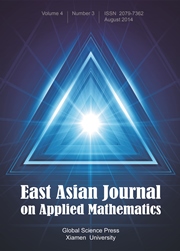No CrossRef data available.
Article contents
Longshore Submerged Wave Breaker for a Reflecting Beach
Published online by Cambridge University Press: 28 May 2015
Abstract
This paper considers the effect of a hard-wall beach on the downstream side of submerged parallel bars in a breakwater. In previous research, it was assumed that the beach can absorb all of the transmitted wave energy, when an optimal dimension for a submerged parallel bar is obtained and the wave amplitude is reduced as more bars are installed. However, for a hard-wall beach there are waves reflected from the beach that change the long-term wave interaction. We adopt the linear shallow water equations in Riemann invariant form and use the method of characteristics, in a procedure applicable to various formations of submerged rectangular bars. The distance from the parallel bar (or bars) to the beach determines the phase differences between right running waves in the beach basin and whether they superpose destructively or constructively before hitting the beach, to define the safest and the most dangerous cases. Our numerical calculations for one bar, two bars and for periodic rectangular bars confirm the analytical formulae obtained.
Keywords
- Type
- Research Article
- Information
- Copyright
- Copyright © Global-Science Press 2012


